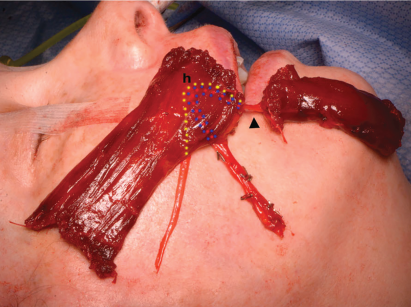BRP and ESP procedure outcomes are comparable in the improvement of obstructive sleep apnea (OSA) with palatal collapse, although further trials and long-term follow-up are needed.
What Is the Best Approach to Repair of Recurrent Laryngeal Nerve Injured During Thyroid Surgery?
Injury to the recurrent laryngeal nerve (RLN) during surgery impacts on the patient’s ability to phonate, breathe, and swallow.

How to Improve Inequities in Head and Neck Cancer
Most cases of oropharyngeal cancer are positive for the human papillomavirus, but among Blacks, 55.3% of cases are HPV-negative, and HPV-negative cases are, to say the least, understudied, said Babak […]
Near-Infrared Fluorescence Imaging Useful in Locating Parathyroid Glands in Thyroidectomy Specimens
Near-infrared fluorescence imaging (NIFI) is comparable to the experienced surgeon’s visual inspection in identifying parathyroid glands.
Ipsilateral Postoperative Radiotherapy, Bilateral Irradiation Have Comparative Survival Rates in Patients with SCC of Unknown Primary
Comparing two different treatmes of patients with squamous cell carcinoma of unknown primary to see the impact on survival rate.

How To: Opening the Palatovaginal Canal to Maximize Anterior Sphenoidotomy in Endoscopic Endonasal Surgery
To secure the working space for any type of EES, a large sphenoidotomy with wide opening of the anterior wall of the sphenoid sinus is a crucial step.

How To: Inferior Meatus Mucosal Flap for Septal Reconstruction and Resurfacing After Nasoseptal Flap Harvest
The nasoseptal flap (NSF) has become the predominant pedicled mucosal flap used in advanced multilayered endoscopic reconstruction to repair skull base defects with cerebral spinal fluid leaks.
What Are In-Hospital Cost Drivers of Endoscopic Transphenoidal Pituitary Surgery?
Postoperative cerebrospinal fluid leak, smoking status, and non-Caucasian ethnicity are associated with significantly increased costs following endoscopic transphenoidal pituitary surgery.
What Are Practice Patterns in Peritonsillar Abscess Management?
Current heterogeneity in peritonsillar abscess management includes differences in workup, investigation, and post-discharge analgesic prescription.

How To: Dual-Vector Gracilis Muscle Transfer for Smile Reanimation with Lower Lip Depression
One paddle elevates and lateralizes the upper lip and commissure, while the second paddle depresses the lower lip.
- « Previous Page
- 1
- …
- 8
- 9
- 10
- 11
- 12
- …
- 42
- Next Page »